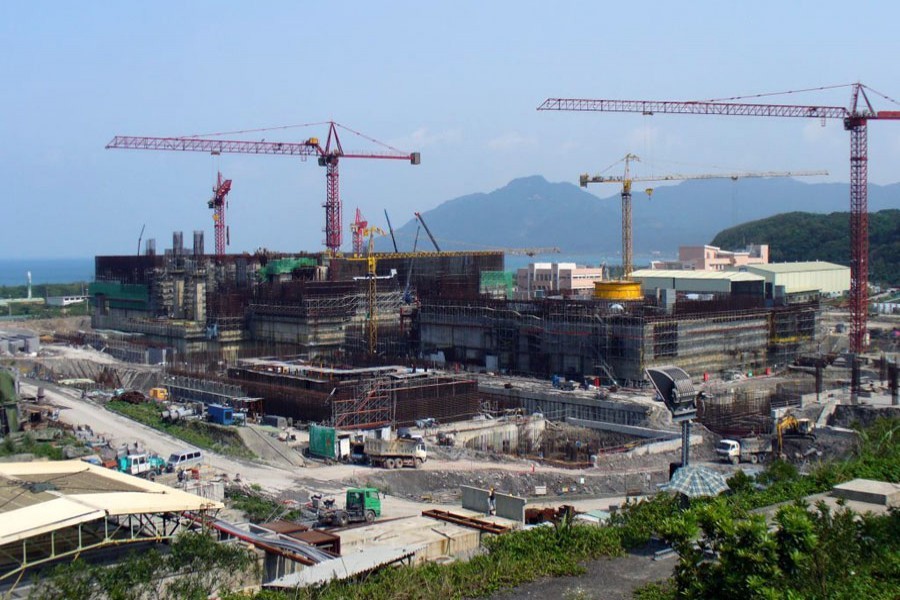
Published :
Updated :

The government has been working hard to make all the villages beautiful in a planned way by ensuring civic amenities alongside protecting biodiversity, the Prime Minister said last week.
Witnessing a presentation on Land Acquisition and Biodiversity Preservation Plan at Tungipara in Gopalganj, she said Bangladesh has very little land inhabited by high population. Civic amenities should be ensured not only in upazila and ward level, but also in each of the villages.
The government has to ensure food security, medical facilities, education and jobs, she said and added that the government has strengthened the economy considering all these factors. All such facilities will be created in rural areas so that the people do not have to come to the capital looking for jobs.
If the villages are made the focal point, natural balance must be maintained while carrying out any sort of development work alongside protecting rivers, canals and wetlands, ensuring water drainage system and preserving waterways. All these matters need to be addressed while going for any development.
There is no denying that the country's rural economy, specifically agriculture, has been a powerful driver of poverty reduction in Bangladesh since 2000. Indeed, agriculture has been accounting for 90 per cent of the reduction in poverty from 2005 until now.
More than 70 per cent of Bangladesh's population and 77 per cent of its workforce live in rural areas. Nearly half of all of local workers and two-thirds in rural areas are directly employed by agriculture, and about 87 per cent of rural households rely on agriculture for at least part of their income.
With one of the fastest rates of productivity growth in the world since 1995 (averaging 2.7 per cent per year, second only to China), Bangladesh's agricultural sector has benefited from a sound and consistent policy framework backed up by substantial public investments in technology, rural infrastructure and human capital.
Faster and more inclusive rural growth with job creation requires greater agricultural diversification together with more robust rural non-farm enterprise development. A shift in production from rice to higher-value crops will significantly reduce malnutrition, trigger more rapid growth in incomes, and create more and better farm and non-farm jobs, especially for women and youth.
Investment in and expansion of the rural non-farm enterprises (RNFEs) is a parallel priority for Bangladesh. RFNEs can help households become more resilient to climate shocks through income and livelihood diversification. And they can be a potentially powerful source of job creatioin, especially for youth and women, through more efficient and competitive value chains.
On the other hand, graduation from the least developed countries (LDC) will help Bangladesh attract more investors given its strength in certain areas such as the size of its Gross Domestic Product (GDP), exports, and population, compared to other LDCs.
Bangladesh is entitled to have duty-free market access for all products in all developed countries except for apparel exports to the United States (US). This creates a huge opportunity for the country. After graduation, however Bangladesh is going to face "preference erosion." Because of the additional tariff on its exports of 6.7 per cent in the absence of preferential treatment, Bangladesh is feared to lose about 8.0 per cent of its total exports. Yet agriculture is expected to dominate the show.
Among so many agricultural projects taken up by the country, the Integrated Agriculture Productivity Project (IAPP) is designed to improve resilience of agriculture production, particularly in the northern and southern regions which are vulnerable to flash floods, drought and salinity intrusion.
The Social Investment Programme Project (SIPP-III), known as the Nuton Jibon Livelihood Improvement Project (NJLIP), builds and strengthens community institutions that mobilise the poor and the extreme poor, and provides them with funding for small infrastructure and livelihood support.
The National Agriculture Technology Programme (NATP-II) helps the government increase productivity and food security, encourage climate change adaptation, and enhance nutrition through safer and more diversified foods. It focuses on better technology and farm production practices, and targets small holders and women's participation in agriculture.
In the circumstances, Bangladesh will have to focus on identifying the challenges first to become a developing country, and to set a sustainable course of action to address such challenges. The country's economists are working already with a master plan about becoming a developed country by 2041. In addition to this, Bangladesh has to formulate a transitional policy of its own for being a developed country.
Bangladesh needs to prepare itself for a smooth graduation by taking into consideration certain issues like ensuring foreign assistance with development priorities and foreign direct investment, diversifying its export basket and market, enhancing technological upgrading, training and skill development of human resources, and achieving resource efficiency and improving productivity.
In spite of macroeconomic challenges, GDP growth is projected to be robust, in the 6.5 to 7.0 per cent range during FY18-20. The key growth drivers are expected to be exports, manufacturing growth, and services, driven primarily by domestic consumption.
Despite being affected by recurring floods, agriculture sector rebounded. However, private investment, which stagnated in recent years, is expected to pick up with growing confidence on infrastructure development prospects, strong domestic demand and stronger global markets.


 For all latest news, follow The Financial Express Google News channel.
For all latest news, follow The Financial Express Google News channel.